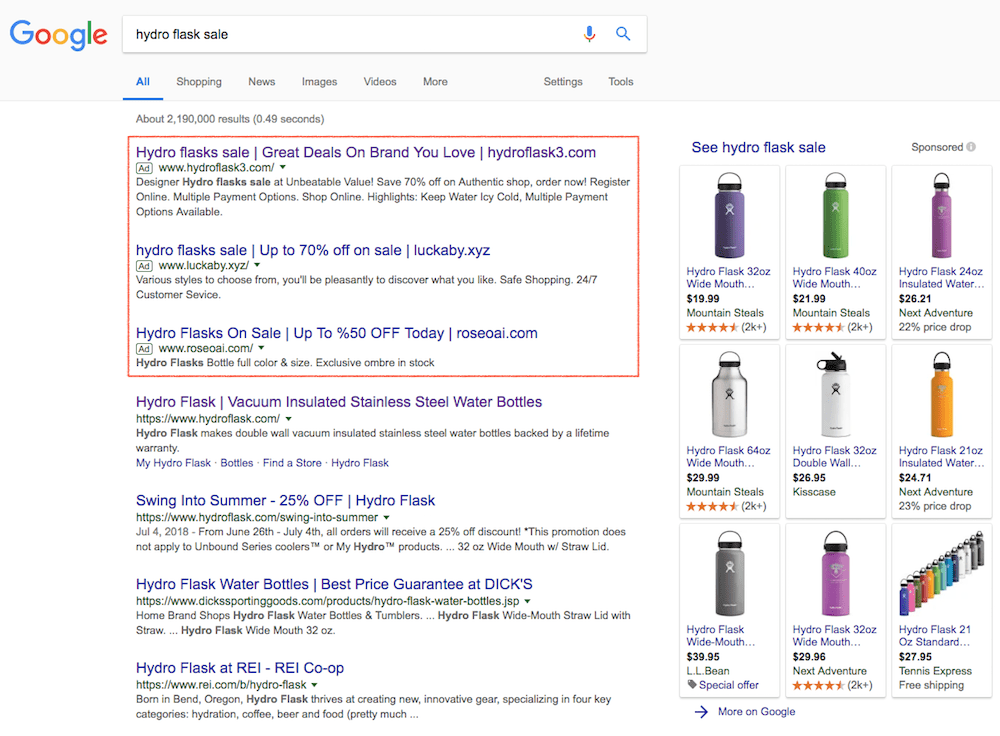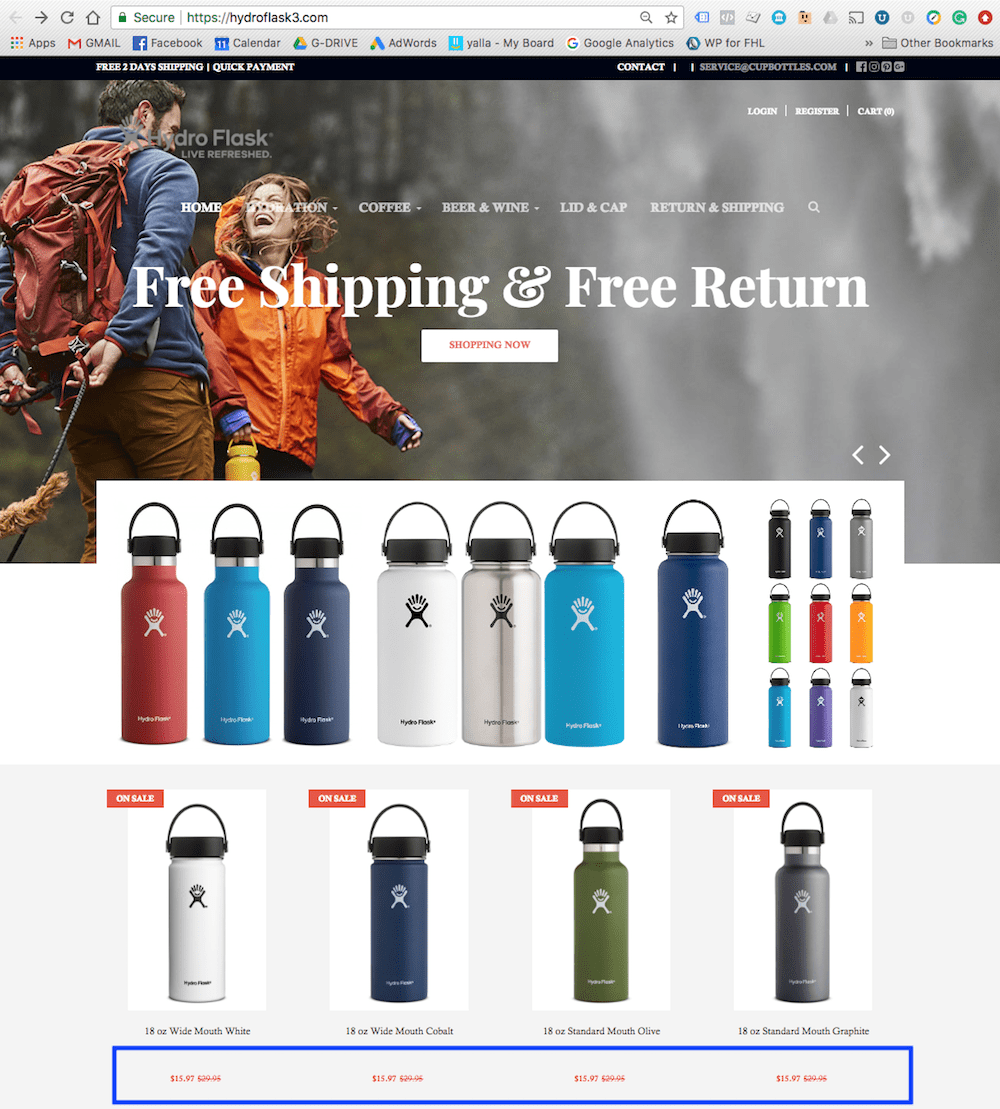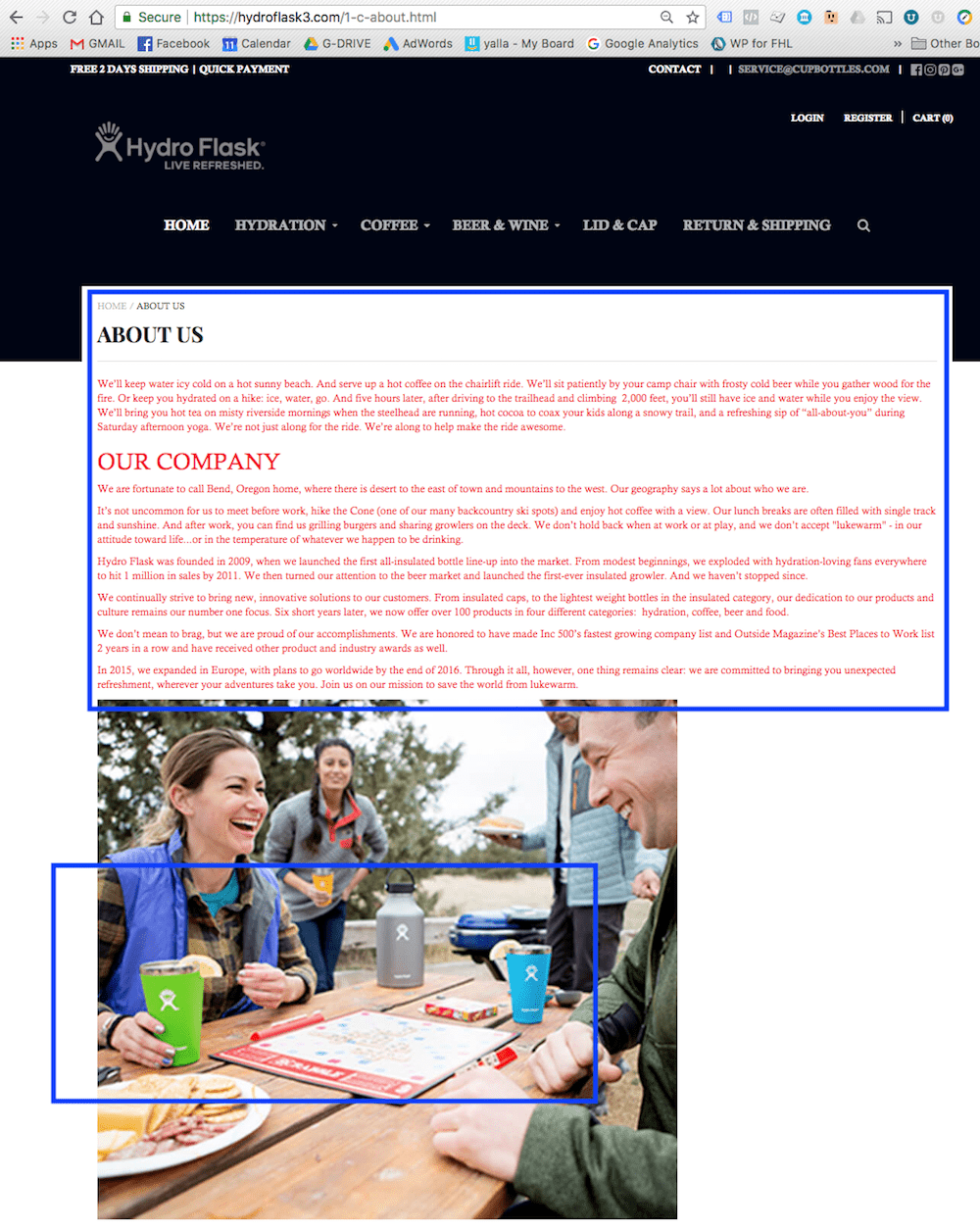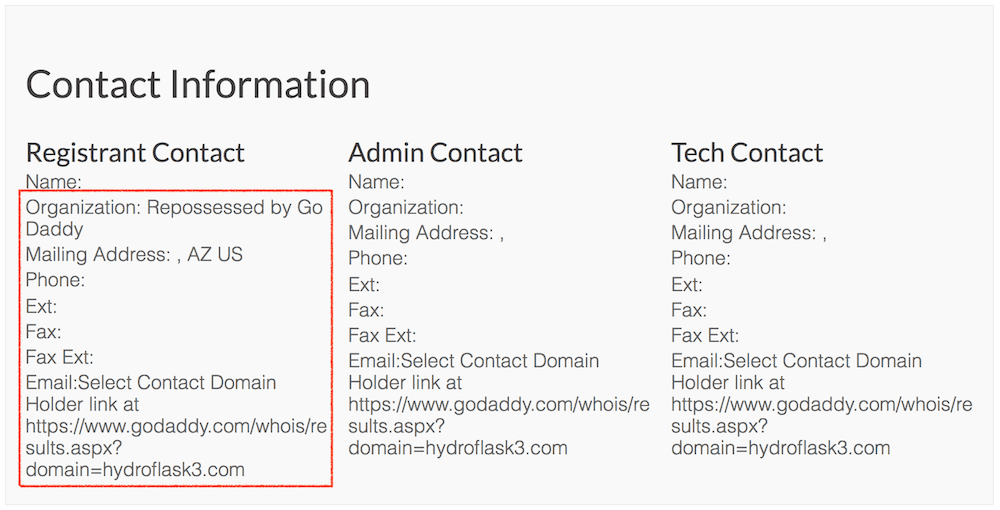Brands and buyers beware.
Over the past few months, we’ve noticed a dramatic increase in brand imposter websites, luring customers with deep discounts only to steal their payment and credit card information. To add insult to injury, these sites are scraping official site content almost word-for-word along with licensed brand imagery. If you’ve seen one of these sites and thought “these prices look too good to be true”, you were right. This post explains how to identify these parasitic web properties and get their associated ads removed from Google.
Below is an example of unauthorized sites claiming to sell Hydro Flask products at 50% to 70% off. The first search result (hydroflask3.com) is the most egregious, but all three are employing similar tactics to harvest credit card information.

*Updated on March 3rd, 2020. We’re still seeing these fraudulent sites pop up despite getting flagged by Google. Having seemingly exhausted relevant URLs, these scammers are increasingly using Google Shopping under seller names like like “HydroFlasksShop”, then redirecting to clearly shady URLs like officialjer.fun. They have lowered their discounts from 40%-50% to 25% to presumably stay slightly more under the radar by aligning with legitimate discount sites. Private and masked WHOIS data makes it difficult to tell whether this is a single “bad player” or multiple scammers running these sites, but the commonalities are clear.
- A seemingly legit seller name or ad display URL that includes the brand name or common misspelling.
- Google Ads promoting deep discounts on all products from the “host” brand.
- Images and content blatantly scraped from the official brand site.
- Egregious (likely automated) English language translations like “FREE 2 DAYS SHIPPING | QUICK PAYMENT”
- A fascination with red text.
- Registered through GoDaddy to an owner in Guangdong, China.


We initially came across these sites while doing competitive research for our clients, but when one of our largest clients became a target, we dove into this head-first to see how to remove these scammers from the top of Google’s search results. To Google’s credit, they have been swiftly shutting down accounts associated with these types of sites, but it has become a game of whack-a-mole. Until Google is able to automatically identify these sites, reporting them is the fastest path to resolution. Unauthorized resellers have been a thorn in the side of brands for years, but in most cases, at least they fulfilled the order. These fraudulent sites present a far more serious set of problems to brands.
- Reduces direct-to-consumer eCommerce revenue. In many cases, ads for these fraudulent sites are ranked above organic listings and/or ads from the brand and authorized dealers. Ranking combined with significant markdowns draw traffic and prospective sales away from legitimate channels.
- Increases the volume of customer service inquiries. The fraudulent sites don’t reply to phone calls or emails, so when the customer’s order never shows up and they start seeing unauthorized charges on their credit card, their inquiries and requests will eventually fall back on the brand.
- Devalues a brand’s products. Even if the would-be customer does not end up making a purchase from the fraudulent site, they are less likely to pay full price in the future once they think they can be purchased at a deep discount.
- Erodes consumer’s trust in the brand. Consciously or subconsciously, those unfortunate enough to place an order on one of these fraudulent sites are likely to place some level of blame on the brand. “You should have prevented this from happening”. “Why didn’t you catch this sooner”. Even worse, the duped customer will be less likely to buy from the brand in the future, whether directly or through a retailer.
These scammers have to rely on Google Ads to surface their sites to the top of search engine results pages because of their lack of domain history and duplicate (stolen) content keeps their sites from ranking organically. Fortunately for brands, bad Google ads are far easier to have stricken from the search results than organic listings. So, what can brands impacted by this scam do to resolve it?
- Contact Google Ads support to report the domain. They will likely encourage you to submit a bad ads complaint form. The more people who submit complaint forms, the higher priority it becomes. Be sure to include as much information as possible about the ad, including the link location, Google search URL, ad display URL, a screenshot of the ad, and comments that make it clear that this is not an authorized retailer.
- Register your trademark with Google. Even once Google is made aware of the fraudulent site and disapproves the ads, the only way to prevent advertisers from running on your branded terms is to register your trademark with Google. We recommend that all brands register their trademark with Google as well as submit a whitelist of authorized retailers who are permitted to use your trademarked terms in ad copy. It’s worth noting that any advertiser can run on any valid keyword, so this whitelist (or blacklist) only applies to ad text.
- Run branded search ads highlighting “Official Site” until the ad for the fraudulent site is removed. While this won’t keep potential customers from placing orders on the fraudulent sites, it will reduce the number of people who end up getting scammed.
- Contact the domain registrar (in this case GoDaddy) to report the imposter domain. A month after we first noticed this Hydro Flaks scam, GoDaddy repossessed the domain.

This all tends to go a bit faster through a Google rep rather than via email or chat. For help with registering your brand’s trademark, recognizing “scrape and steal” sites, or getting Google to remove them from the search results, contact us here.
